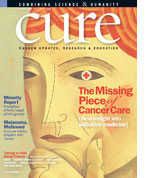An Effective Complement to the Pap Smear
Several studies worldwide have demonstrated that HPV testing is superior to the traditional Pap test for the screening of cervical cancer
In fact, one widely heralded comparison study, conducted by researchers at McGill University and reported last fall in The New England Journal of Medicine, found that the DNA test for cancer-causing HPV is nearly twice as sensitive as the Pap test. The study involved more than 10,000 participants.
“The Pap test found approximately half of the precancerous lesions in women who had some, whereas the HPV test found more than 90 percent,” notes Marie-Helene Mayrand, MD, PhD, an assistant professor in the department of obstetrics, gynecology and social and preventive medicine at the University of Montreal and lead author of the NEJM report.
The Pap test, which has been available for more than 50 years, involves the analysis of cervical cells for changes in the nuclei that could suggest the presence of precancerous lesions. These changes are subtle and often difficult to find, requiring great skill on the part of the technicians who scrutinize the cells. The HPV test, on the other hand, uses special antibodies that target the genetic code of cancer-causing types of HPV. If those types of HPV are present, an observable chemical reaction occurs.
The debate now is whether a Pap test should be conducted at the same time as an HPV test. “Most studies suggest that it may not be cost-efficient because the HPV test is so good,” Mayrand notes. “A possible alternative might be to do an HPV test first and a Pap smear only on women who test positive. This would greatly reduce the number of Pap tests that would have to be analyzed, and would include only women truly at risk, possibly resulting in a better performance of the Pap test.”
Less frequent testing for cervical cancer may be another side benefit. Because the HPV test is so sensitive, women may one day be able to extend their testing regimen from annually or every two years to every four or five years, Mayrand says.
The demonstrated sensitivity of the HPV test could also be good news regarding the early detection of new HPV-related cancers or recurrences among cancer survivors.
“In approximately 85 percent of severe precancers, the lesions are cured by simple outpatient procedures,” Mayrand notes. “But we know that approximately 15 percent will have either a persistence or a recurrence, and recent studies suggest that HPV testing may be the best test for identifying those persistences or recurrences. However, more research is needed.”
